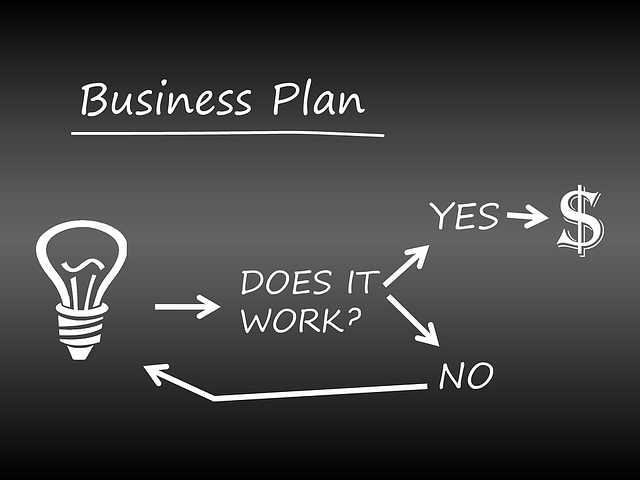An activity can be implemented effectively if its objectives and methodology are documented properly. In the case of a project, such type of document is known as a project charter, which acts as a framework for executing activities.
In elementary words, a project charter refers to a formal document that mentions the various important aspects of a project such as project objectives, project deliverables, key stakeholders and their role, etc. It determines different high-level requirements in a project and provides the relationship of the project with an organization. The understanding of project charter is important to understand project planning.
A generic project charter includes the following information:
- Title and description of the project
- Name of the project manager
- Authority of the project manager
- The need for the project
- Requirements of resources in the project
- Key stakeholders in the project
- Key deliverables of the project
- Project objectives
- Requirements for project approval
- Key risks
- Signatures of authorities who have approved the project
The project charter works as a legal basis for a project. In different words, the project charter serves as a clue of approval for the project as it consists of the name and signature of the project approvers. A project charter outlines all the necessary data and information about a project and serves the purpose of a target document.
It authorizes the project manager to start the project. A project manager must get an approved project charter by the project sponsors before initiating any kind of project. He/she must strive to achieve the goals specified in the project charter. In large organizations or companies, multiple projects are undertaken simultaneously.
In a multiple project environment, various projects are canceled and rejected because of the lack of assistance and support from the management or project sponsors. Project charter helps to reduce the chances of cancellation of a project.

Project Planning
Project planning is like a guide that helps and serves a project manager to step forward from the position where he/she is and the destination where he/she wants to reach (to the goal). Therefore, the fortune or loss of a project depends upon the effectiveness of the project plan and method.
Consider the example of a shoe manufacturing organization. It decides it projects on various factors, such as the budget of the company, its target audience, market segments, design, price, attributes, place, advertisement (promotion) and so on while planning its project.
The Elements of Project Planning
- Scope: It defines the main purpose of selecting a particular project. While planning a project, you need to consider its scope.
- Objectives: Project objectives are the detailed description of the desired results of a project. They include the mission and value of the project and provide information about the profitability and competitiveness of the project.
- Resources: Project resources refer to the available resources for completing a project. A project manager should use the available resources efficiently to accomplish the objectives of the project. Project resources include raw materials, types of machinery, tools, manpower, funds, etc.
- Team: A project team refers to a group of individuals employed to complete a project. The project team is one of the important resources of an organisation. The members of the project team are given the necessary training to handle the project efficiently.

FOLLOWING ARE THE STEPS OF A PROJECT PLANNING:
- Designing a resource plan: To begin a project, one has to plan about various resources including manpower, machine, materials, money, etc. While developing a resource plan, the project manager takes into account all resource that is related to the activities involved for a project.
- Building a financial plan: Finance is an important factor for any business. Without a healthy and sound financial support, one cannot execute the project plan. While making a financial plan, one must consider the important factors such as the cost of production, estimated returns, manpower requirement, the project duration, and sources of funds.
- Creating a quality plan: Quality is an important factor and a project must meet the quality expectations of the customers. A business must deliver a quality product or service to its customers. If the quality of a product or service is not up to mark, it may bring disastrous consequences for the business and also hamper the image of the company. To guard against such consequences, the quality expectations must be clearly defined according to the AQL of the company and a quality plan is documented accordingly with proper Standards such as ISO, BIS etc.
- Building a risk plan: In this phase, all foreseeable project risks are analysed and documented. The actions required to prevent each risk from occurring and reduce the impact of the risk it may eventuate are identified. Risks may occur while using a product or the mishaps that take place while executing the project. A risk plan guides the company to take initiatives to mitigate the expected risk and its impact on the project and prevent losses.
- Creating an acceptance plan: A successful delivery of the project requires full acceptance from the customer that the deliverables of the project meet or exceed their expectations. An acceptance plan is put in place to help achieve this objective. This plan clarifies the completion criteria for each deliverable and provides a schedule of acceptance reviews. The project plan requires approval from management, higher authority, and the clients for whom the project is initiated.
- Creating a communication plan: A communication plan is created during the project planning phase of the project management lifecycle. It defines what, how, and when communication would be shared with the associated members and executives to inform them about the project objectives, responsibilities, documentation, project plan, etc.

Project planning tools
- Plus-Minus-Interesting (P-M-I): It is a valuable tool used to weigh the pros and cons of decisions taken to carry out a project. PMI identifies the positive and negative impact of the selected course of action on the project goal.
- Cost/benefit analysis: This project planning tool is used to assess the costs involved in a particular project and compare them with the estimated benefits. In the cost/benefit analysis, the benefits and costs are compared by converting them into monetary terms and adjusted by the time value of money. If the total cash outflow is greater than the total cash inflow, the project planning is approved, otherwise, it is rejected.
- Force-Field analysis: This project planning tool was developed by Kurt Lewin, a renowned social psychologist. The tool helps to analyse the negative and positive forces that are associated with a particular project. In other words, the force field analysis tool is used to analyse the pros and cons of a project.
- Cash flow forecasts: This tool helps in determining the future financial liquidity and profitability of a project over a fixed period. Cash flow forecasts are used to assess the effect of time on costs and revenue of a project. They help in estimating the cash outflow (expenses) and cash inflow (revenue) of the project as well as in managing the unnecessary expenses. An effective cash flow forecast helps in the successful completion of a project.
TO YOUR SUCCESS SHAILESH
- 10 Best Free Blogging Sites in 2023 (to Build a Blog for Free)
- Top 10 Best WordPress Plugins in 2022
- Project Planning Techniques and Tools
- Product Life cycle
- Choosing the Right Facebook Campaign Objective
- Hostinger Vs GoDaddy
- How To Start Email Marketing For Free
- Facebook Advertising Terms You Need to Know


0 Comments